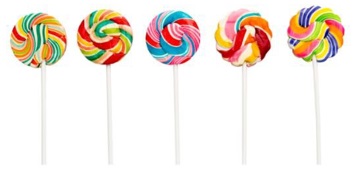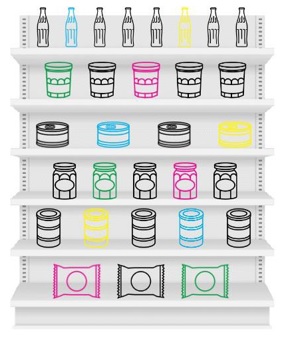Why You Should Use Color Psychology to Design Your Next Confectionery Product
There’s an old saying that “you are what you eat.” But what you choose to eat also has a lot to do with what you see. In particular, there’s a well-established correlation between the color of our food and how we perceive the way it tastes. In a very real sense, you “eat with your eyes.”
Color is important because it has the power to evoke emotion – not only in food products themselves but in how they are marketed and packaged. Understanding these dynamics when developing new products is critical to ensure you communicate the flavors, sensations, and responses you want associated with them. In this post, we’ll cover some of the factors you need to consider in order to make informed color choices.
Color influences customer perceptions — and product acceptance
Surprisingly, the effects of color on taste and flavor perceptions have been studied by researchers for almost 90 years. The first published work dates back to 1936! According to an academic review of many of these studies, nearly every study found that the color of a food or drink can exert a powerful influence on people’s flavor identification responses.
An article in the journal Flavour summed up the importance of color in food and beverages:
“Color is the single most important product-intrinsic sensory cue when it comes to setting people’s expectations regarding the likely taste and flavour of food and drink.”
Simply put, people expect foods of specific colors to taste a certain way, whether one of the five taste perceptions (sweet, salty, bitter, umami, sour) or a particular flavor (cherry, lemon, lime, etc.).
For example, people often think a green lollipop will have a lime or green apple flavor with a “pucker” factor or sour taste. In fact, 37% of participants in one study identified a cherry-flavored drink as lemon or lime simply because it had been colored green. The study’s participants had similar difficulty identifying other flavor-color mismatches.
 Candies marketed to children are often made in bright colors, while those for adults usually feature more muted hues.
Candies marketed to children are often made in bright colors, while those for adults usually feature more muted hues.
For food products other than candy, blue, green, white, grey, black, and brown are often considered the least appetizing colors because they are associated with spoilage.
But context matters! Take the color red, for instance. Red is associated with sweetness in certain types of fruit but is also viewed as spiciness in other foods.
Color and taste perceptions can also vary depending on the age, gender, ethnicity, or cultural background of the consumer.
Complementary colors
Multiple cues can impact the experience of consuming a food or drink product. Aside from the color of the food, cues include product marketing colors and the color of the food packaging.
Even though these color choices have nothing to do with the food itself, they can inspire emotions, suggest complex concepts, or link products to specific holiday celebrations. As a result, you need to carefully select these colors when designing packaging, logos, etc.
 Here are just a few common ways color is used to influence perception:
Here are just a few common ways color is used to influence perception:
- Red stimulates hunger, while yellow elicits feelings of This is why many fast-food restaurants have these two colors in their logo.
- Companies that want to convey sustainability or recycling initiatives often change their packaging to incorporate more green, which is associated with nature and the Natural brown tones are another popular choice in such cases because they suggest the color of the earth and imply sincerity.
Certain color combinations immediately evoke connections to specific holidays. One of the most recognizable is red and green — a combination that can suggest Christmas at any time of year. Others include orange and black for Halloween, red and/or pink for Valentine’s Day, bright green for St. Patrick’s Day, and so on.
Harness the power of color to enhance your food products
This post has covered just a few basic examples of how color combinations can influence the experience of food and drink products. Food companies are constantly looking for eye-catching new ways to use color to gain a competitive edge, and many food marketing strategies intentionally use color psychology.
With 60 years of innovation developing food colorants, glazes, polishes, and confectionary inks, Colorcon can help you develop food products that convey the right cues to consumers – from the flavors they anticipate tasting to the emotions you hope to inspire. Contact us today to learn more.
 Alex recently joined Colorcon as the Area Technical Manager for the Food and Confectionery division where she provides technical assistance to customers in the development of food and confectionery products, troubleshooting, and small & commercial scale trial support. She has a BS and MS in Food Science from the University of Maine
Alex recently joined Colorcon as the Area Technical Manager for the Food and Confectionery division where she provides technical assistance to customers in the development of food and confectionery products, troubleshooting, and small & commercial scale trial support. She has a BS and MS in Food Science from the University of Maine